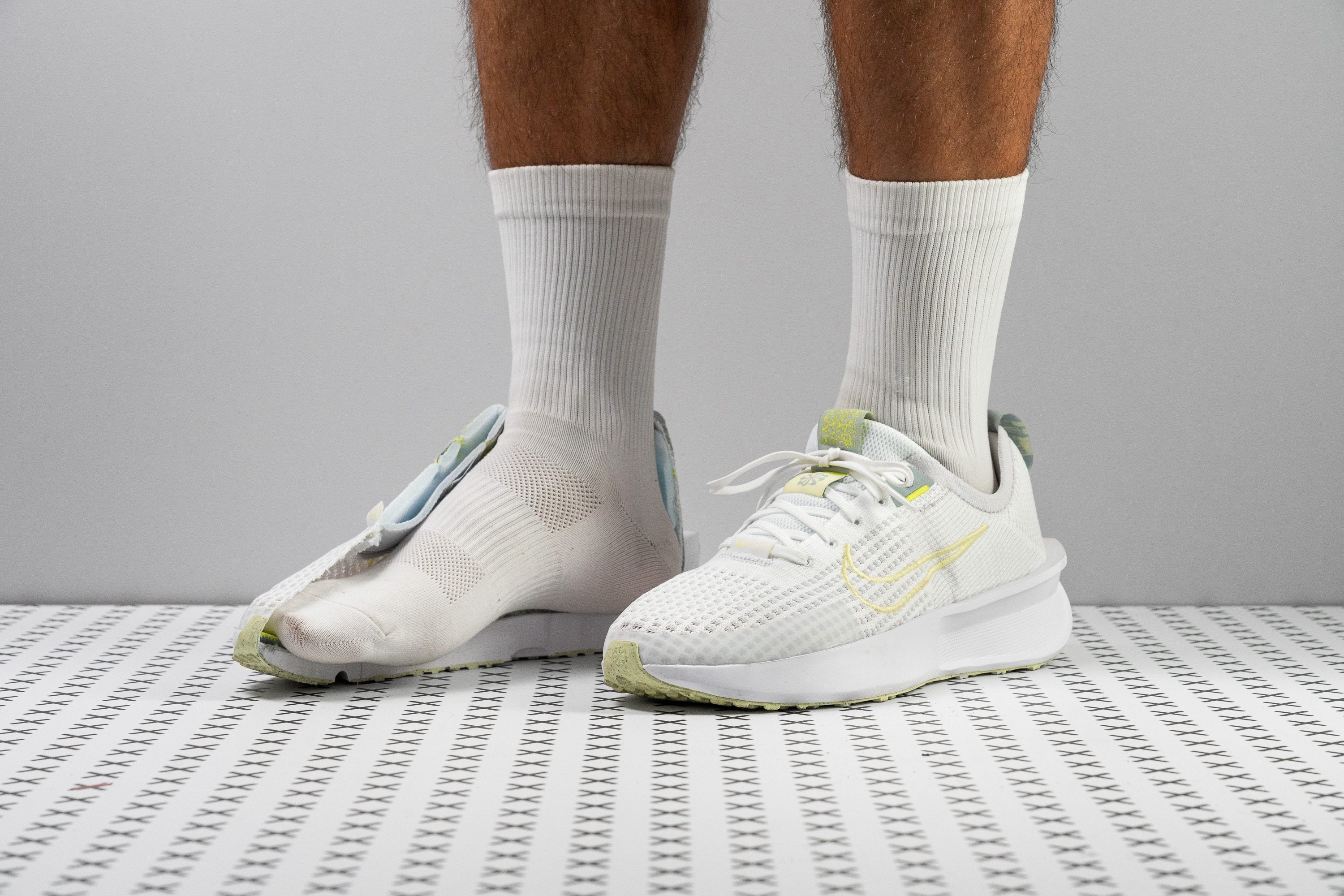Our verdict
- Top pick in best Nike walking shoes
- Top pick in best cheap running shoes
Pros
- Ideal for hot climates
- Perfect for everyday life
- Exceptional comfort
- Fantastic value
- Great for beginners and heel strikers
- Flyknit upper under $100!
- Really lightweight
- Upper durability
Cons
- Not very bouncy
- Outsole lacks grip
- Only for short and easy runs
Audience verdict
- Top 25% in Nike running shoes
- Top 27% in running shoes for walking
- Top 30% most popular running shoes
Comparison
The most similar running shoes compared
+ + Add a shoe | |||||
|---|---|---|---|---|---|
| Audience score | 88 Great! | 77 Decent! | 79 Good! | 86 Good! | |
| Price | £80 | £65 | £65 | £160 | |
| Pace | Daily running | Daily running | Daily running | Daily running | |
| Shock absorption | Low | Moderate | Moderate | - | |
| Energy return | Low | Low | Low | - | |
| Traction | Low | Moderate | Moderate | - | |
| Arch support | Neutral | Neutral | Neutral | Neutral | |
| Weight lab Weight brand | 8.5 oz / 241g 9.2 oz / 260g | 9.3 oz / 265g 9.4 oz / 267g | 9.7 oz / 275g 9.7 oz / 275g | 10.3 oz / 293g 10.6 oz / 300.5g | |
| Lightweight | ✓ | ✗ | ✗ | ✗ | |
| Drop lab Drop brand | 9.3 mm 10.0 mm | 10.1 mm 10.0 mm | 7.8 mm 8.0 mm | 8.1 mm 8.5 mm | |
| Strike pattern | HeelMid/forefoot | Heel | Mid/forefoot | HeelMid/forefoot | |
| Size | True to size | Slightly small | True to size | True to size | |
| Midsole softness | Balanced | Balanced | Balanced | Balanced | |
| Difference in midsole softness in cold | Normal | Small | Small | Small | |
| Toebox durability | Good | Decent | Bad | Good | |
| Heel padding durability | Good | Good | Good | Decent | |
| Outsole durability | Decent | Good | Decent | Good | |
| Breathability | Breathable | Moderate | Moderate | Moderate | |
| Width / fit | Medium | Medium | Medium | Medium | |
| Toebox width | Medium | Medium | Medium | Medium | |
| Stiffness | Moderate | Moderate | Moderate | Stiff | |
| Torsional rigidity | Moderate | Moderate | Moderate | Stiff | |
| Heel counter stiffness | Moderate | Moderate | Stiff | Moderate | |
| Heel lab Heel brand | 29.7 mm 30.0 mm | 32.2 mm 32.0 mm | 31.2 mm 31.0 mm | 32.1 mm 30.5 mm | |
| Forefoot lab Forefoot brand | 20.4 mm 20.0 mm | 22.1 mm 22.0 mm | 23.4 mm 23.0 mm | 24.0 mm 22.0 mm | |
| Widths available | Normal | NarrowNormalWideX-Wide | NormalWideX-Wide | Normal | |
| Orthotic friendly | ✓ | ✓ | ✓ | ✓ | |
| Season | SummerAll seasons | All seasons | All seasons | All seasons | |
| Removable insole | ✓ | ✓ | ✓ | ✓ | |
| Ranking | #123 Top 34% | #333 Bottom 10% | #320 Bottom 13% | #193 Bottom 47% | |
| Popularity | #110 Top 30% | #60 Top 17% | #78 Top 22% | #321 Bottom 13% |
Who should buy
After testing the Interact Run from top to bottom—both in the lab and on the road—we've discovered it's a perfect fit for those who:
- Value a plush upper over all else—the Interact Run is the first Nike shoe priced under £100 to feature Flyknit, making it an exceptional deal.
- Want a budget-friendly running shoe suitable for 2 or 3 casual runs per week that can also double as daily wear.
- Are new to running and want a first shoe that offers high-quality materials without breaking the bank.
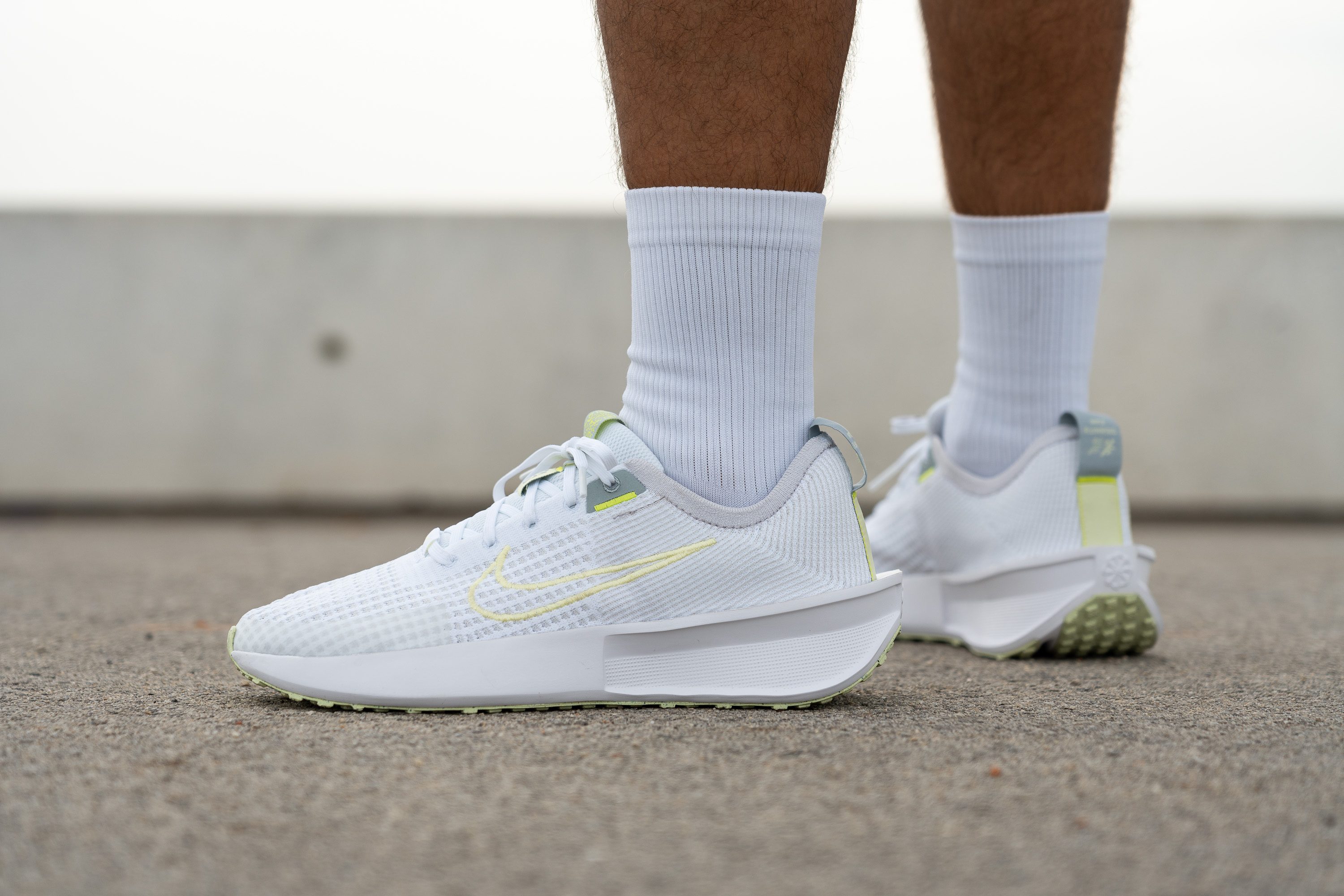
Who should NOT buy
We think that the Interact Run's midsole is its Achilles' heel. While not disastrous, it lacks the cushioning and energy return some runners seek. For a similar price, better alternatives exist—such as the Saucony Axon 3 or the Brooks Revel 7.
Furthermore, we do not recommend the Interact Run for runners with even mild stability needs. In our experience, shoes like the ASICS GT 1000 13 or the ASICS Gel Pulse 15 offer way more support at a competitive price, making them a wiser choice for those without a pristine neutral form.
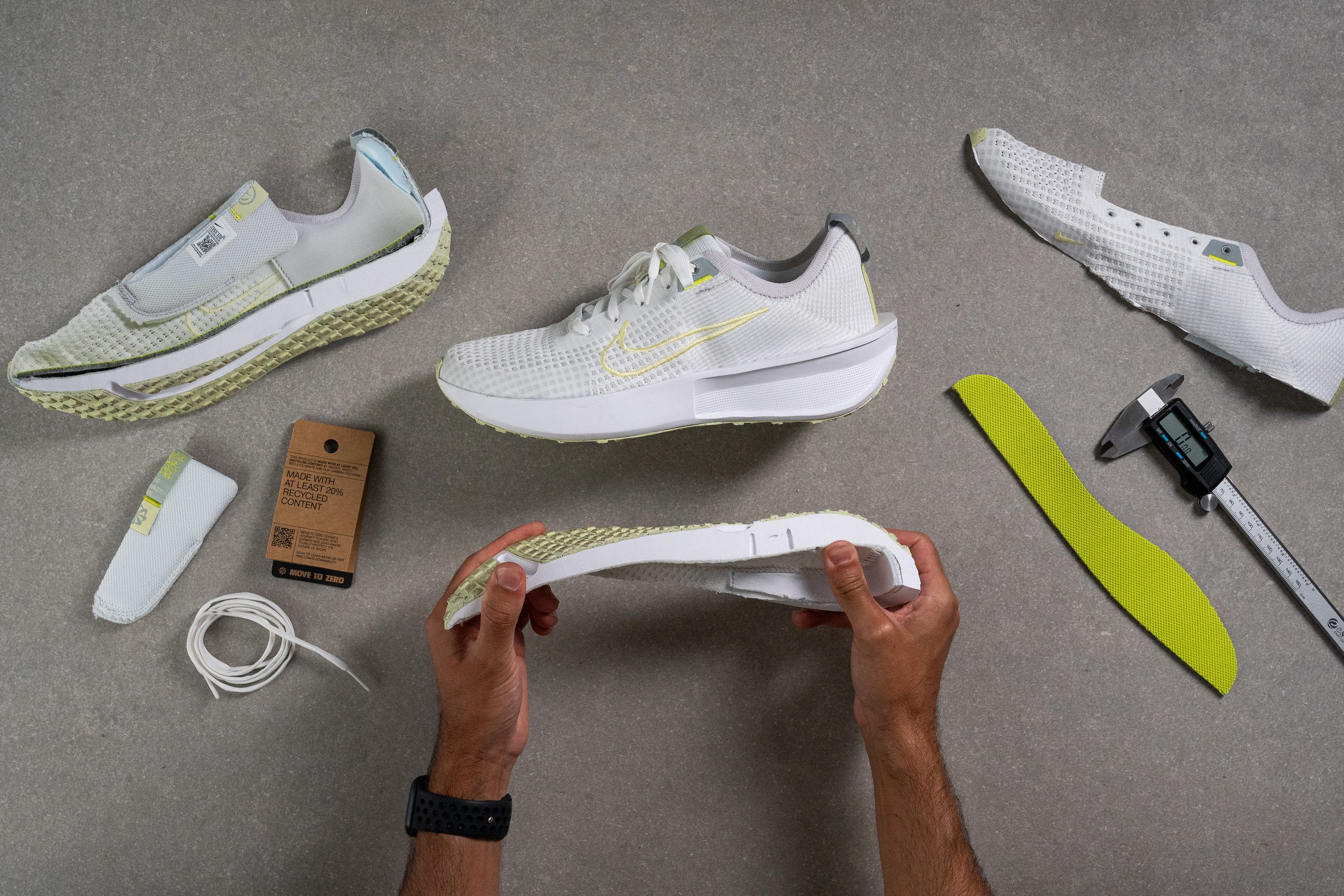
Cushioning
Shock absorption
The stack height of the Interact Run doesn’t even reach 30 mm in the heel, which clearly points to reduced shock absorption.
We tested it (of course!) and found just 108 SA in the heel and 89 SA in the forefoot. That's enough for everyday runs, but not ideal for long distances.
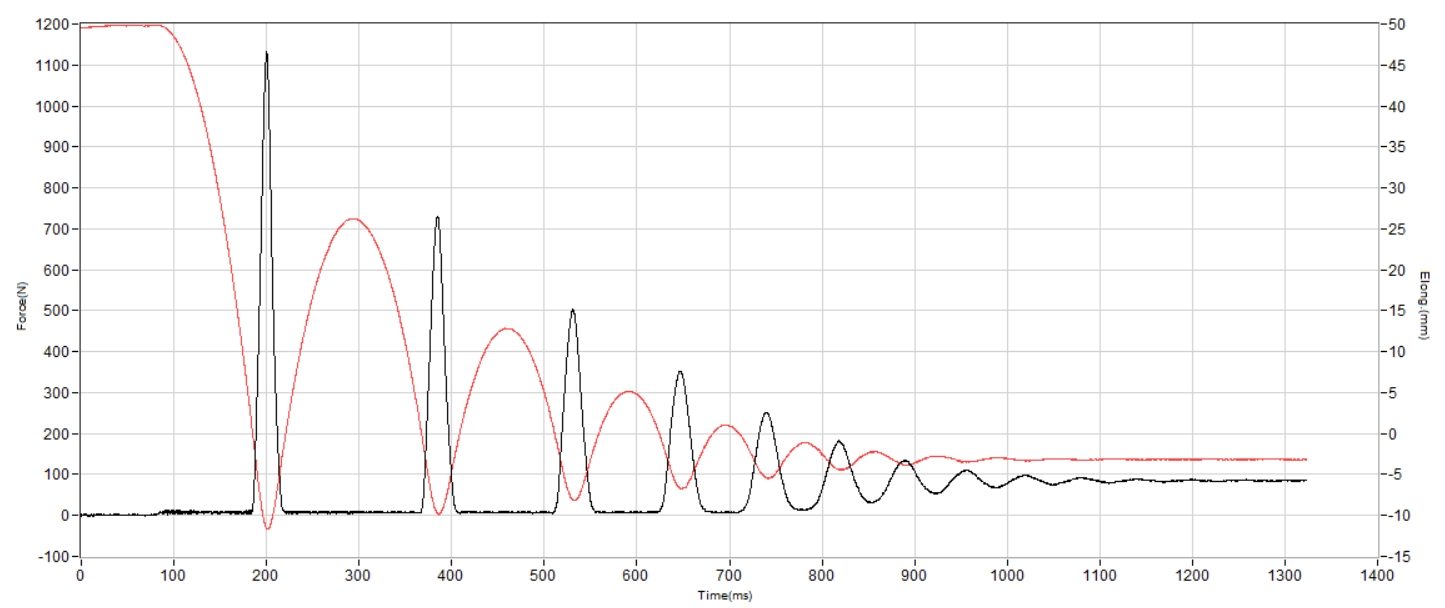
| Interact Run | 108 SA |
| Average | 129 SA |
Energy return
Energy return isn’t anything remarkable at 54.2% in the heel and 58.5% in the forefoot, but it aligns well with the budget-friendly price of this shoe. Expecting more would’ve been wishful thinking on our part.
| Interact Run | 54.2% |
| Average | 58.5% |
Heel stack
Nike did a great job at reducing the weight of this shoe. However, there's a notable aspect to consider—at a heel stack height of 29.7 mm, it's considerably lower than most models we've tested, which typically feature more foam.
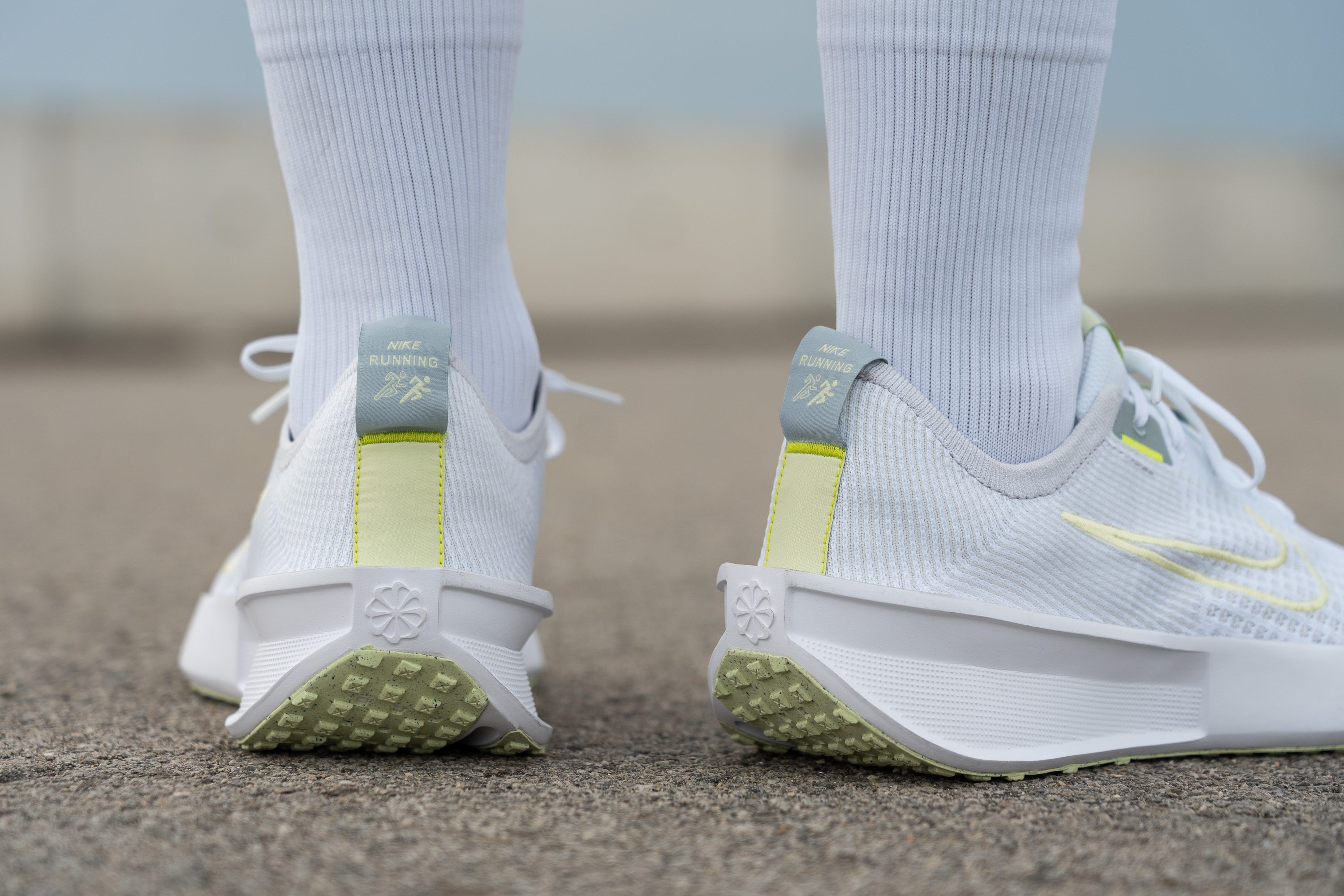
As a result, we've found that this shoe is ideally suited for lighter runners or those who prefer a closer contact with the ground.
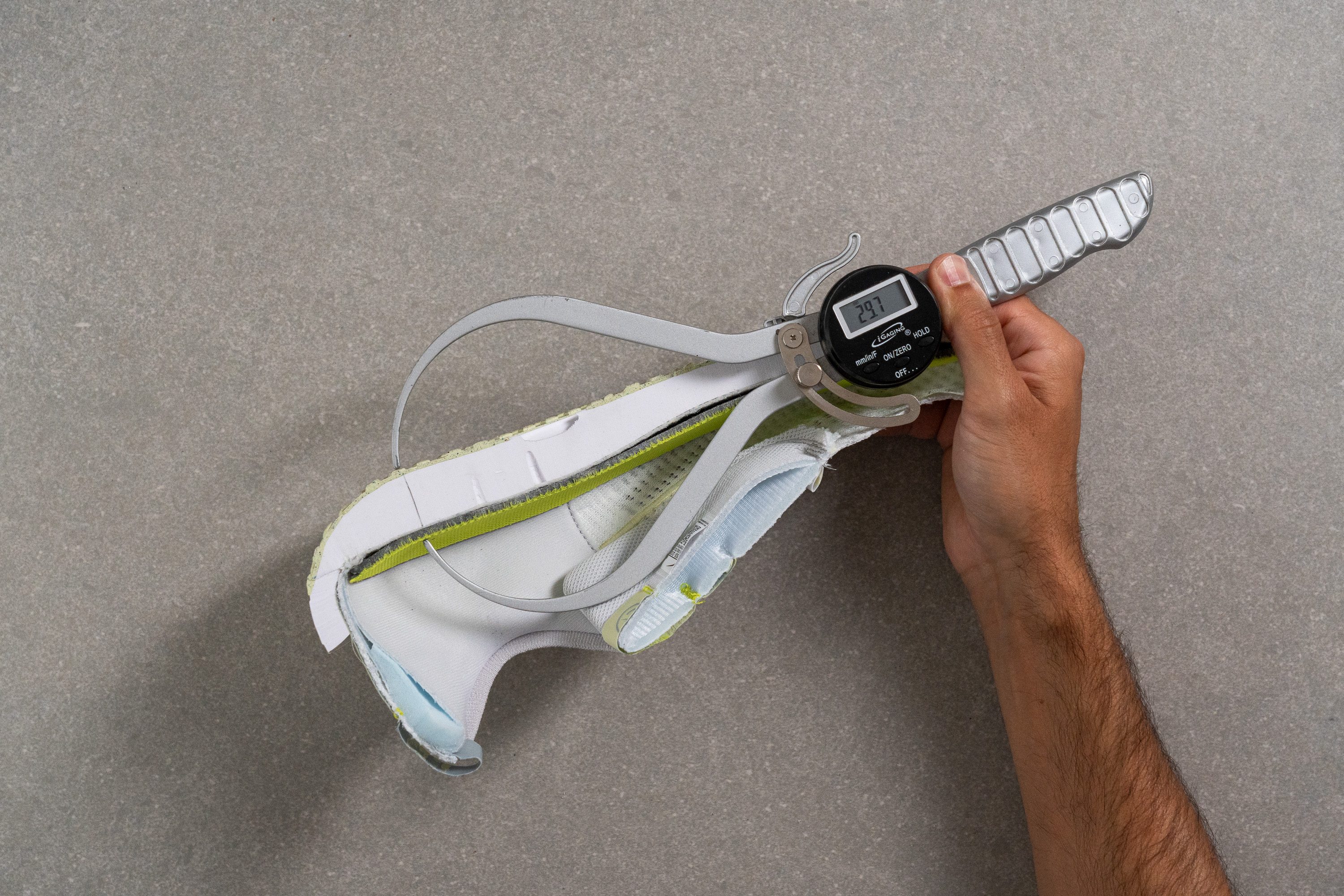
| Interact Run | 29.7 mm |
| Average | 34.8 mm |
Forefoot stack
The forefoot experiences a similar situation. We measured a total of 20.4 mm in this area, suggesting that the shoe is better suited for heel strikers due to its design.
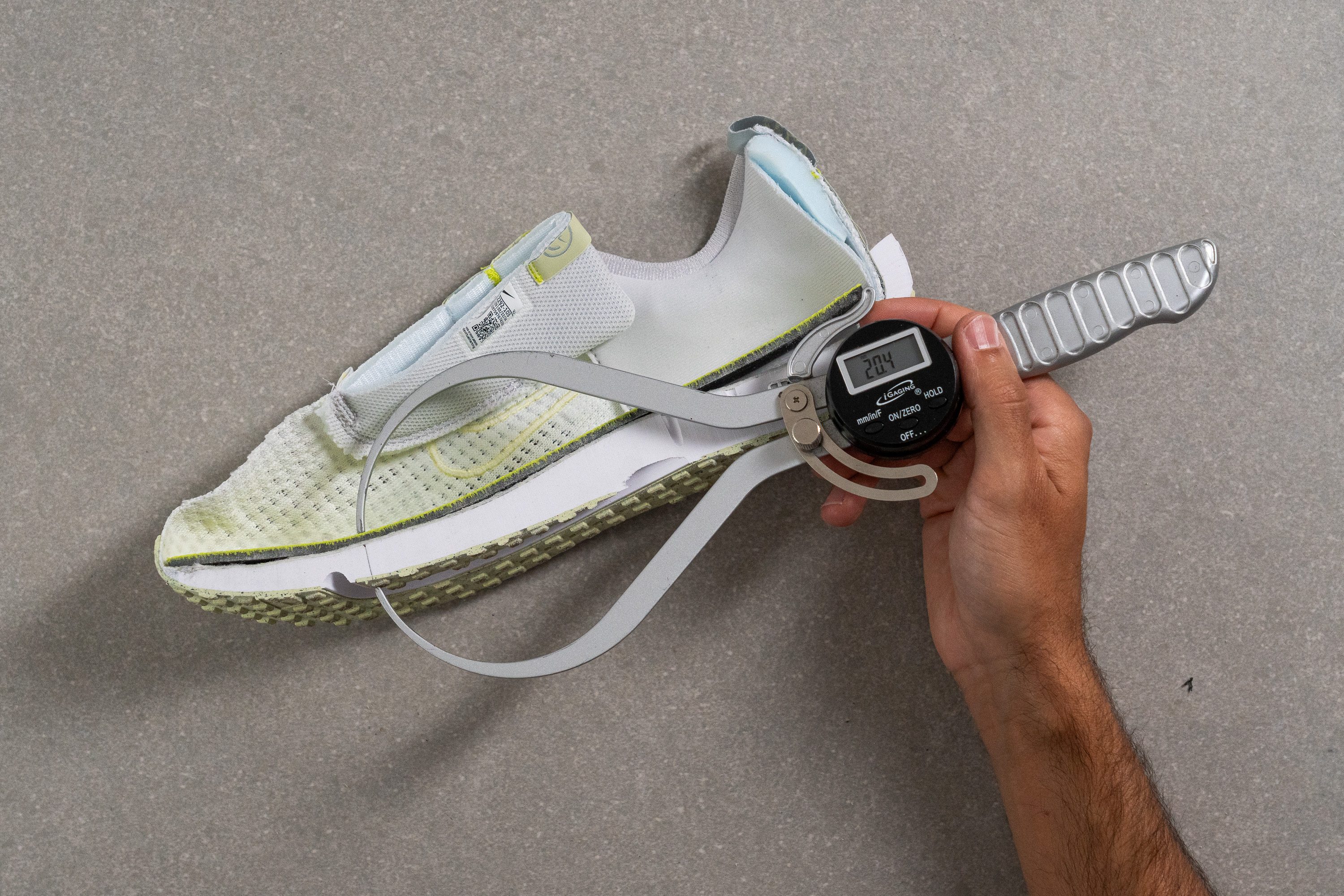
| Interact Run | 20.4 mm |
| Average | 26.2 mm |
Drop
Given its entry-level price point, the 9.3 mm drop is primarily designed for beginners or casual runners, who often prefer a higher drop to complement their running form.
Does this mean advanced runners or those with midfoot and forefoot striking techniques should avoid it? Not at all—they can still benefit from this shoe, at the end of the day, it's still a sub-10-mm drop.

| Interact Run | 9.3 mm |
| Average | 8.6 mm |
Midsole softness
The midsole of the Interact Run isn't particularly plush, yet it avoids being overly firm. We measured its softness using a Shore A durometer, recording a value of 20.8 HA, which indicates a balanced feel.
During our test runs, we noted the moderate softness and low energy return, typical of the basic EVA foam (Phylon) used. For those seeking a more dynamic and responsive experience, we recommend getting the Pegasus 41, which provides a bouncier ride at a reasonable price.
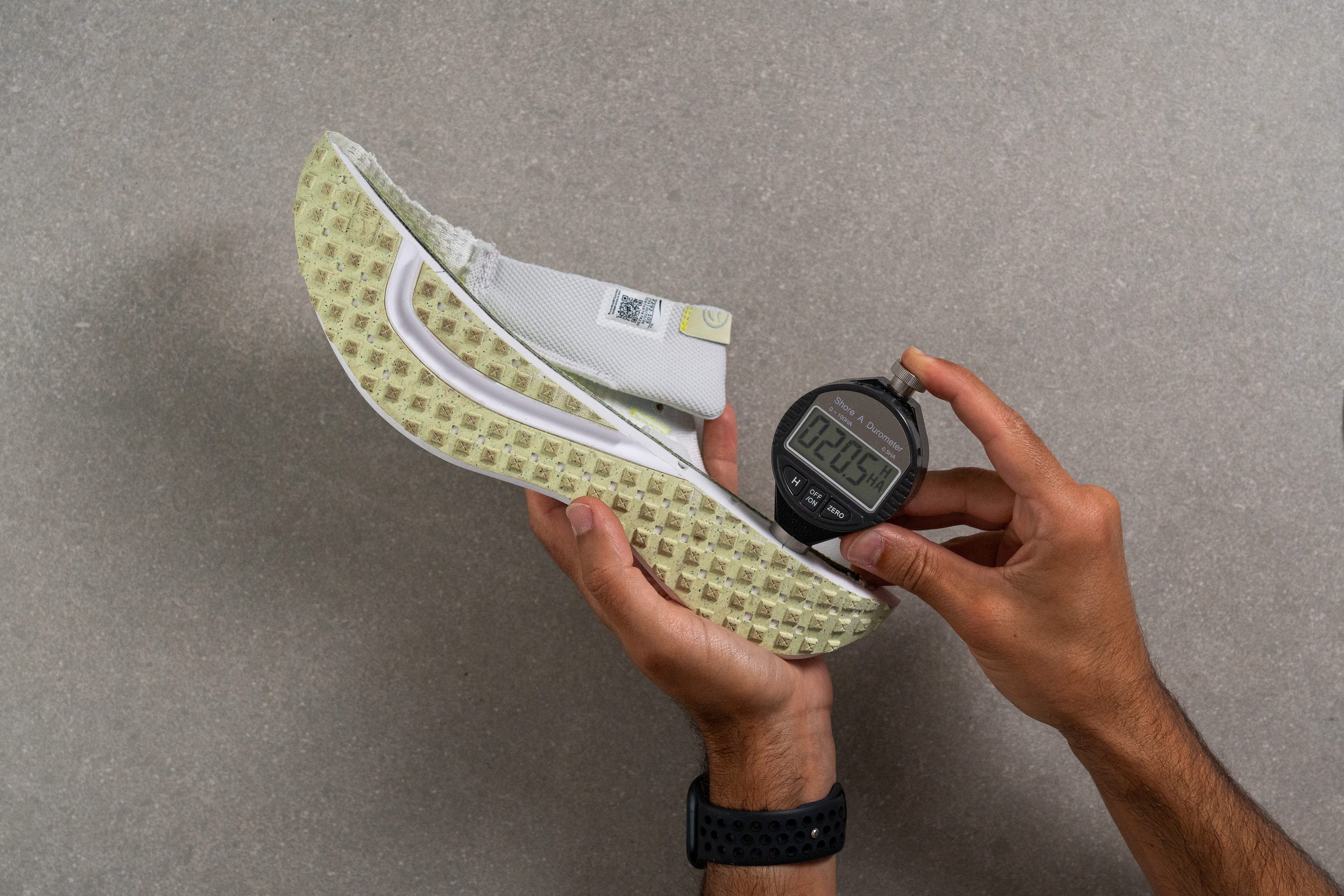
| Interact Run | 20.8 HA |
| Average | 20.4 HA |
Rocker
Throughout this review, we've highlighted that this shoe is particularly well-suited for heel strikers, a fact underscored by the significant heel flare in its design.
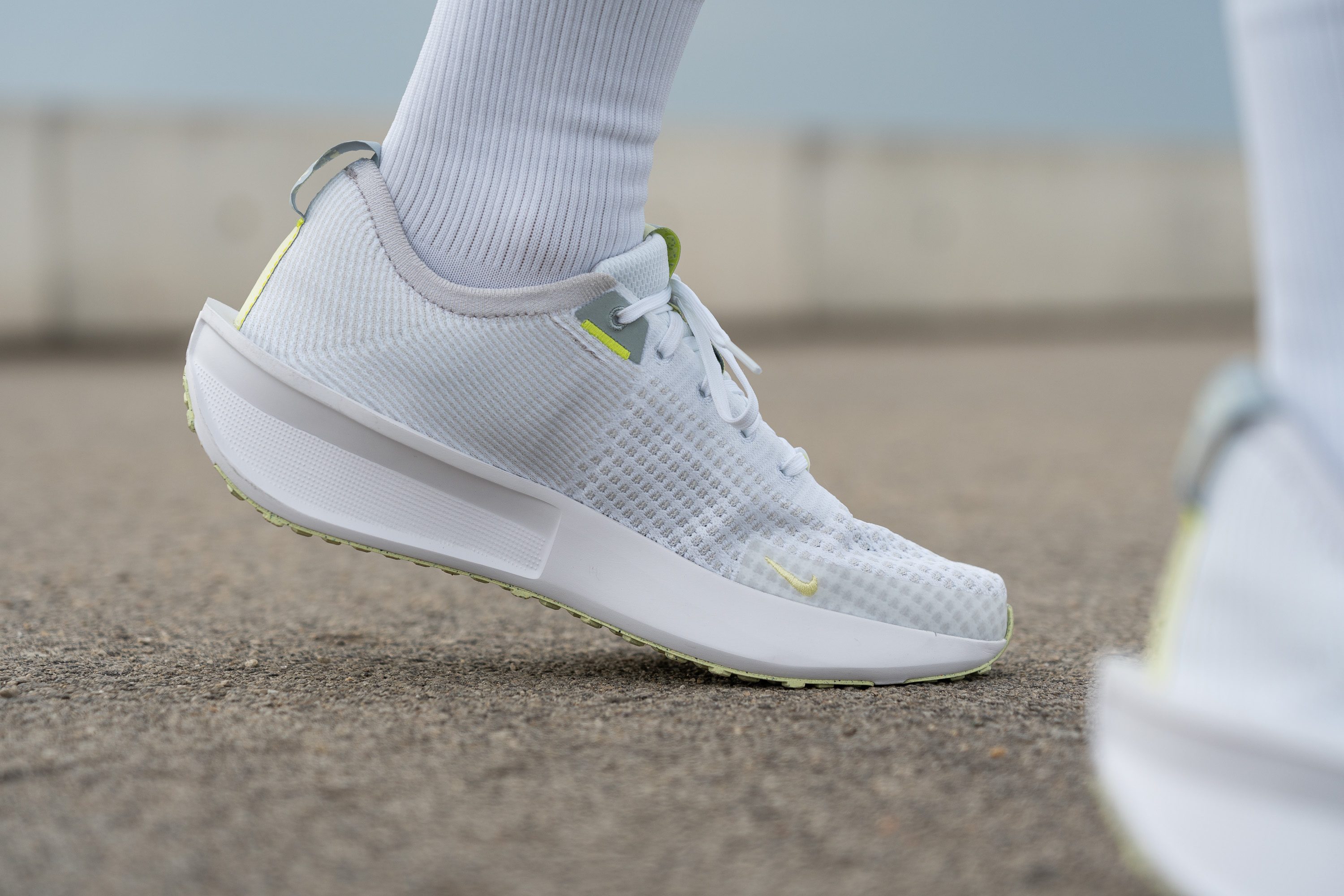
We discovered that the heel facilitates a smooth roll-off due to its curvature, while the forefoot maintains a flat profile, offering a traditional ride. This setup works well as the shoe is flexible and doesn't have a high stack height.
Size and fit
Size
Nike Interact Run fits true to size (199 votes).
Width / Fit
At 96.9 mm across the widest part of the upper, the Interact Run offers a pretty normal fit that comfortably accommodates those with average-sized feet.
However, individuals with very wide feet might find it limiting, as Nike only offers the Interact Run in standard D widths for men and B for women, without options for 2E or 4E widths. This lack of wider sizes is somewhat unusual for a budget-friendly shoe.
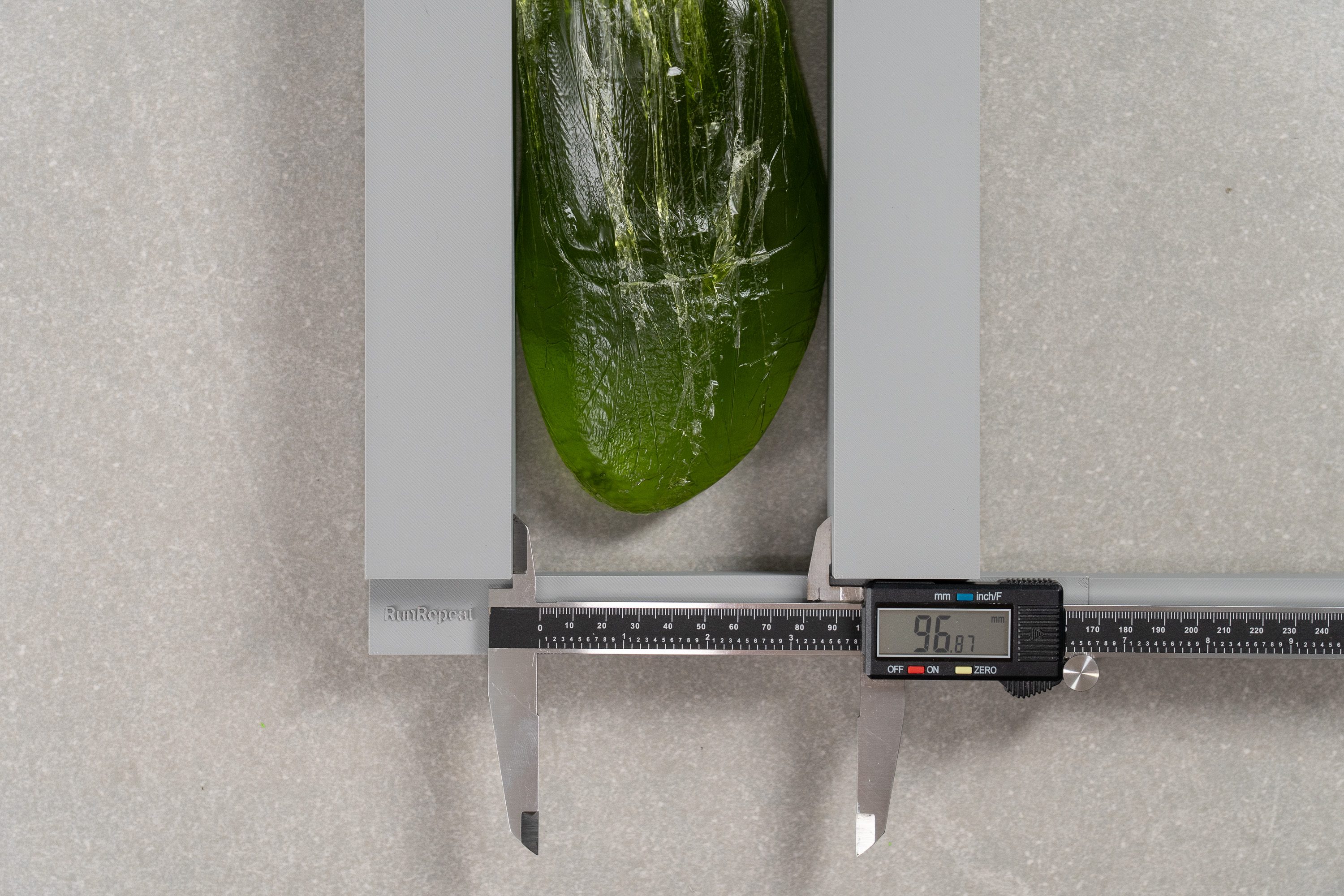
| Interact Run | 96.9 mm |
| Average | 95.1 mm |
Toebox width
The upper sports a classic Nike shape with a tapered toebox, as confirmed by our measurement of 71.2 mm.

| Interact Run | 71.2 mm |
| Average | 73.3 mm |
Toebox height
We also registered a toebox height of 27.9 mm, which feels sufficient as it doesn’t press against the toes.

| Interact Run | 27.9 mm |
| Average | 27.1 mm |
Traction / Grip
Traction test
We discovered in the lab that the Nike Interact Run struggles with traction on wet surfaces—posting one of the lowest results we've seen so far at just 0.21. For this reason, we don’t recommend it for slippery conditions.
When it comes to dry grip, the performance is average and usable for day-to-day runs, but it lags behind most running shoes. In our view, this is not your shoe if grip is a priority.
| Interact Run | 0.21 |
| Average | 0.48 |
Outsole design
Nike opted for a cost-saving approach with a basic waffle design and a large central channel. This outsole definitely looks cheaper than the upper and doesn't grip well, so it's clear to us that this is where Nike chose to cut costs to keep the shoe affordable.
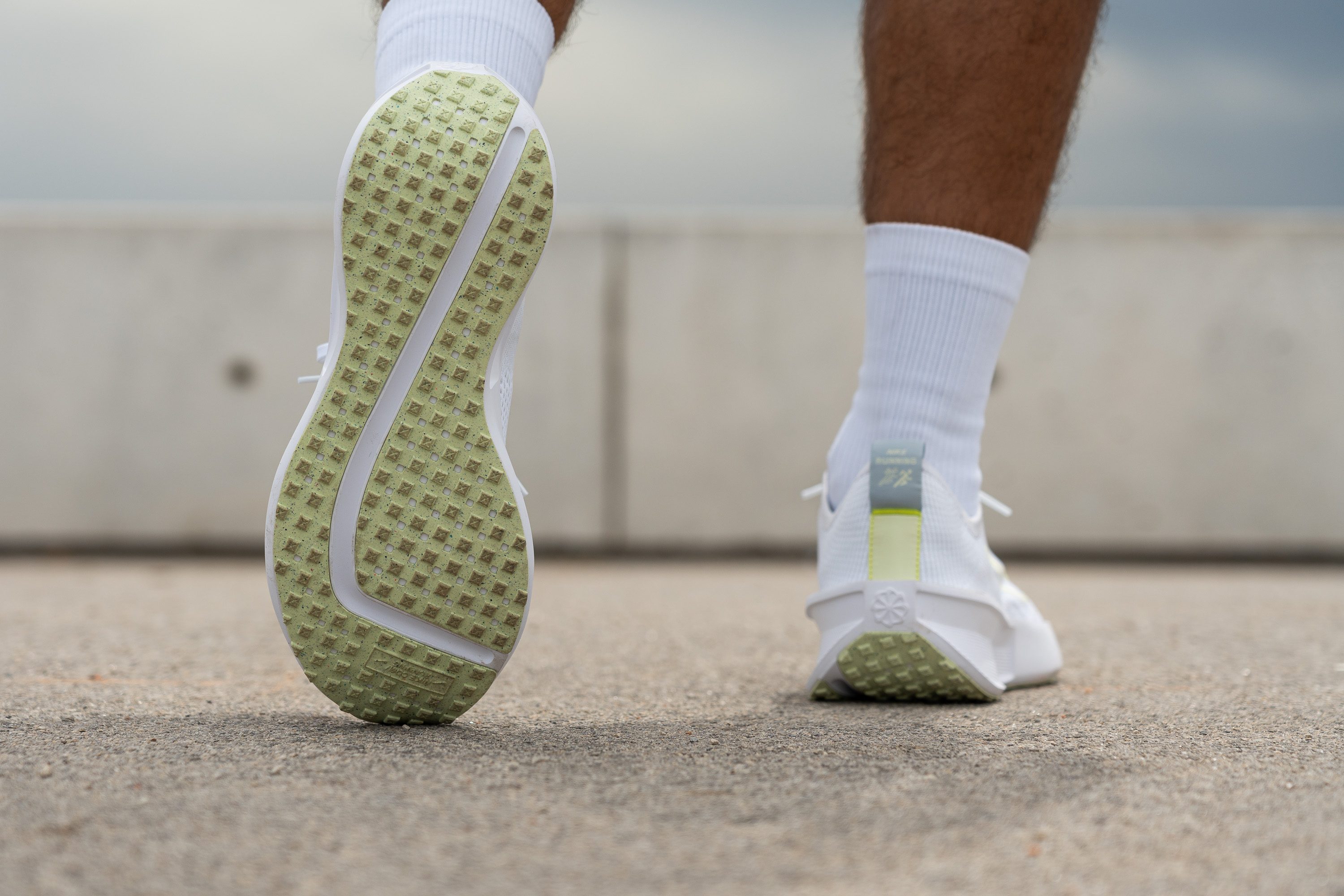
Flexibility / Stiffness
Any running shoe designed for everyday comfort, such as walking the dog or running errands, should perform effortlessly in our 30-degree bend test.
The Interact Run required 12.6N of force to bend, indicating good flexibility, though still far away from reaching the crazy level of barefoot-feel shoes like the Nike Free RN NN.
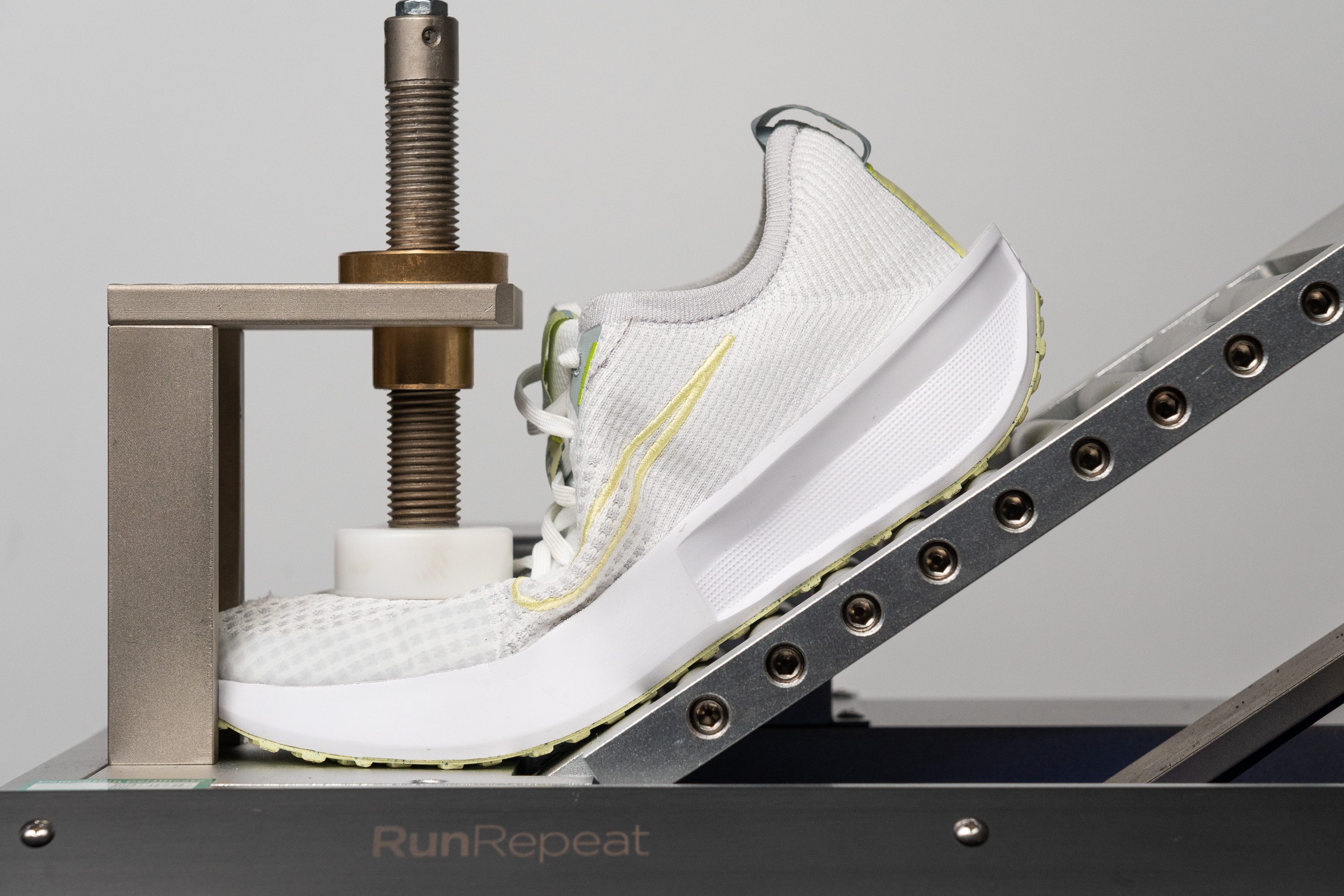
| Interact Run | 12.6N |
| Average | 15.3N |
Stiffness in cold (%)
We conducted another cold-temperature test by placing the shoe in the freezer for 20 minutes and then assessing its flexibility. The result required 19.4N, marking a 34.8% increase in stiffness. This performance is quite decent for an EVA midsole.
| Interact Run | 35% |
| Average | 33% |
Weight
We found that the Interact Run delivers a funny balance of highs and lows in our lab tests, with its weight being a significant highlight for us.
Weighing in at just 8.5 oz or 241g, it stands out as a remarkably lightweight daily trainer, especially given its plush knit upper.
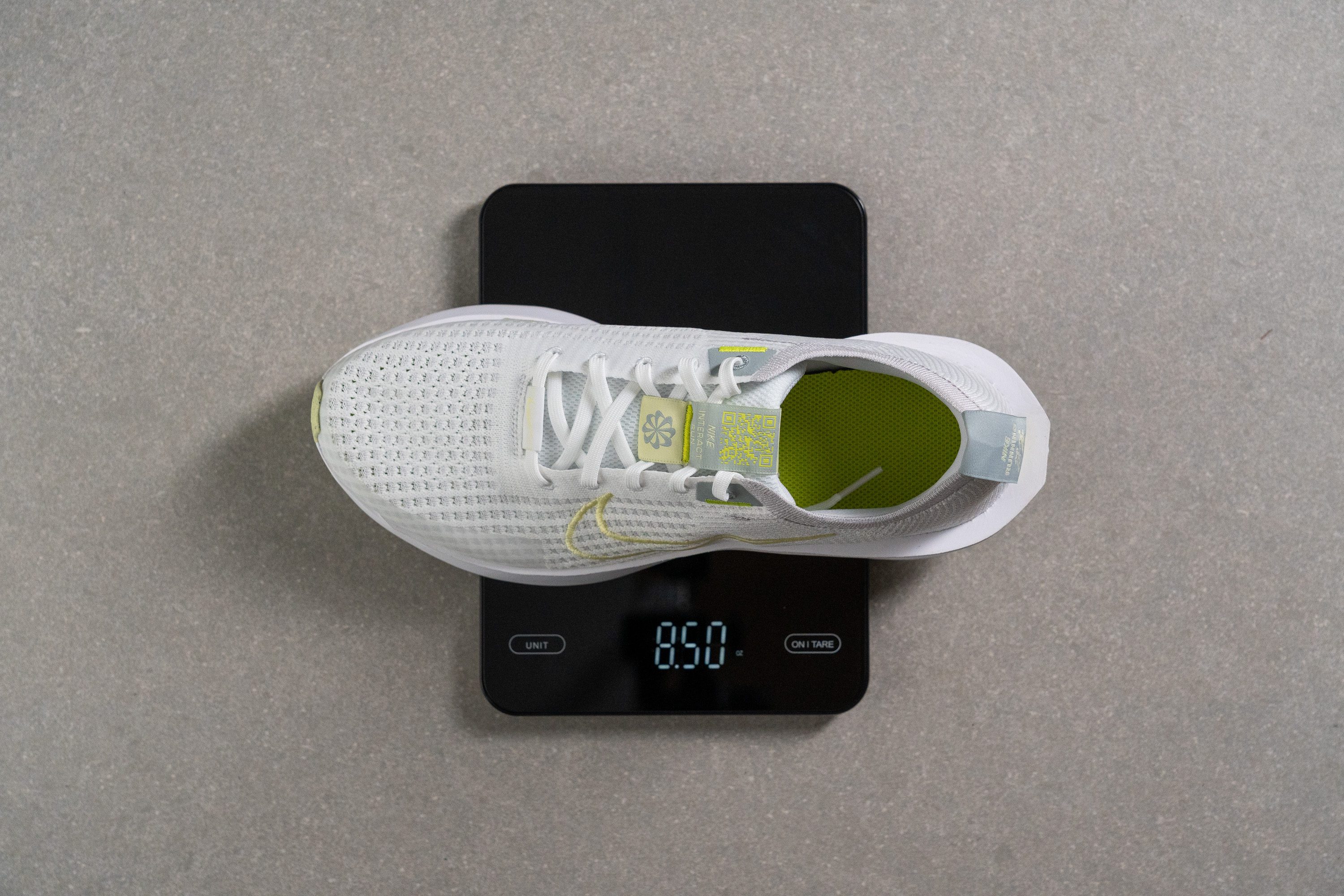
| Interact Run | 8.5 oz (241g) |
| Average | 9.3 oz (264g) |
Breathability
Until now, acquiring a Flyknit shoe typically came with a high price tag. However, it seems Nike has now managed to produce this sought-after material affordably, bringing it mainstream with an £90 price tag that's really easy on any wallet.
Our tests with a smoke machine confirmed that the Interact Run excels in these areas, earning a perfect 5/5.
In our detailed examination, we found that Nike smartly designed the upper with two distinct sections—the rear is thicker to support heel strikers, while the midfoot and toebox boast incredible breathability, which we visually confirmed with our light.
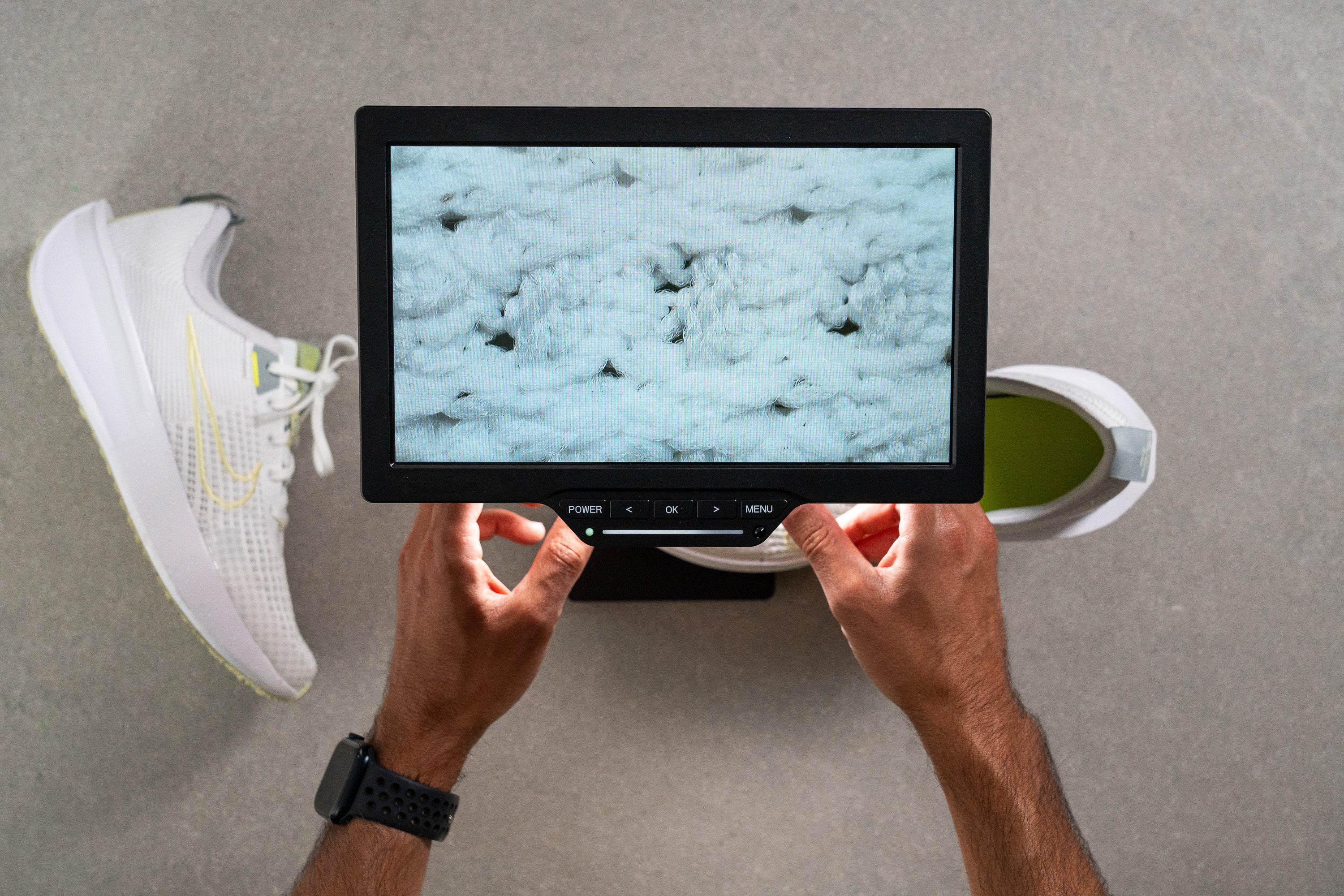
Taking a look with our digital microscope, we discovered a dense mesh that feels plush yet doesn't compromise on air flow, thanks to well-placed ventilation holes.
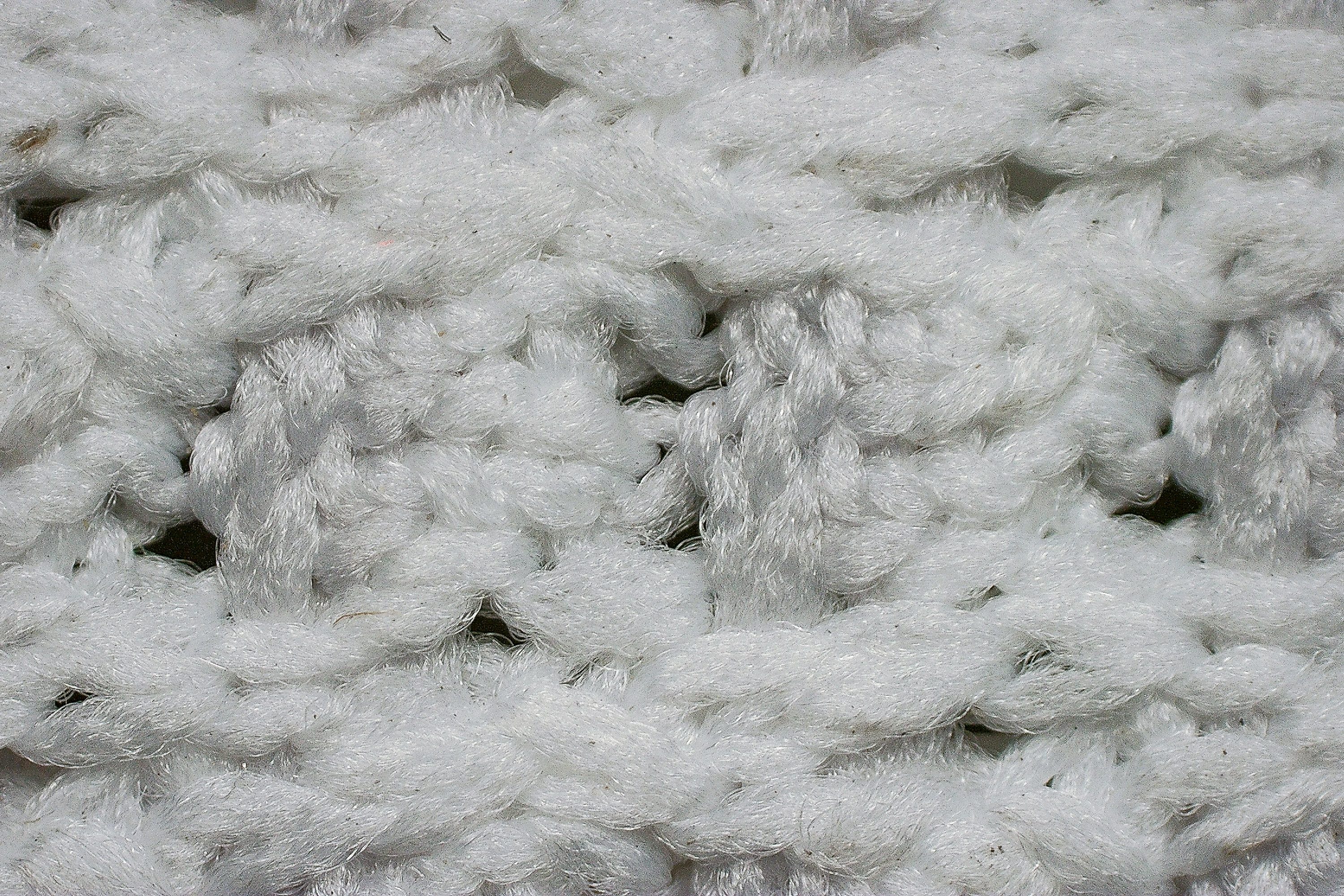
Considering its price, this upper is an absolute gem. The heel collar features luxurious padding, and the materials feel premium.
| Interact Run | 5 |
| Average | 3.7 |
Stability
Lateral stability test
The Interact Run's design and sidewalls naturally enhance stability, but we still think it's only a solid option for neutral runners. In fact, we firmly believe that those with slight pronation issues might find that a shoe specifically designed for stability would serve them better.
Torsional rigidity
The Interact Run features a chassis that is not overly rigid, which significantly improves its usability for everyday life. However, despite its stack height, it wasn't as flexible as we anticipated.
We gave it a 3 out of 5 rating, which places it right around the average mark for flexibility.
| Interact Run | 3 |
| Average | 3.5 |
Heel counter stiffness
Nike opted not to include an external heel counter in this model, instead incorporating a small cardboard piece within the heel to add some structure. This approach, earning a 3 out of 5 score, is typical for daily trainers and provides a reliable way to ensure comfort with just enough support.
| Interact Run | 3 |
| Average | 2.9 |
Midsole width - forefoot
After checking with our callipers, we encountered a fairly standard shoe with no unusual dimensions to report.
With a forefoot width of 115.3 mm, the shoe offers ample space yet maintains a streamlined, non-clunky look.
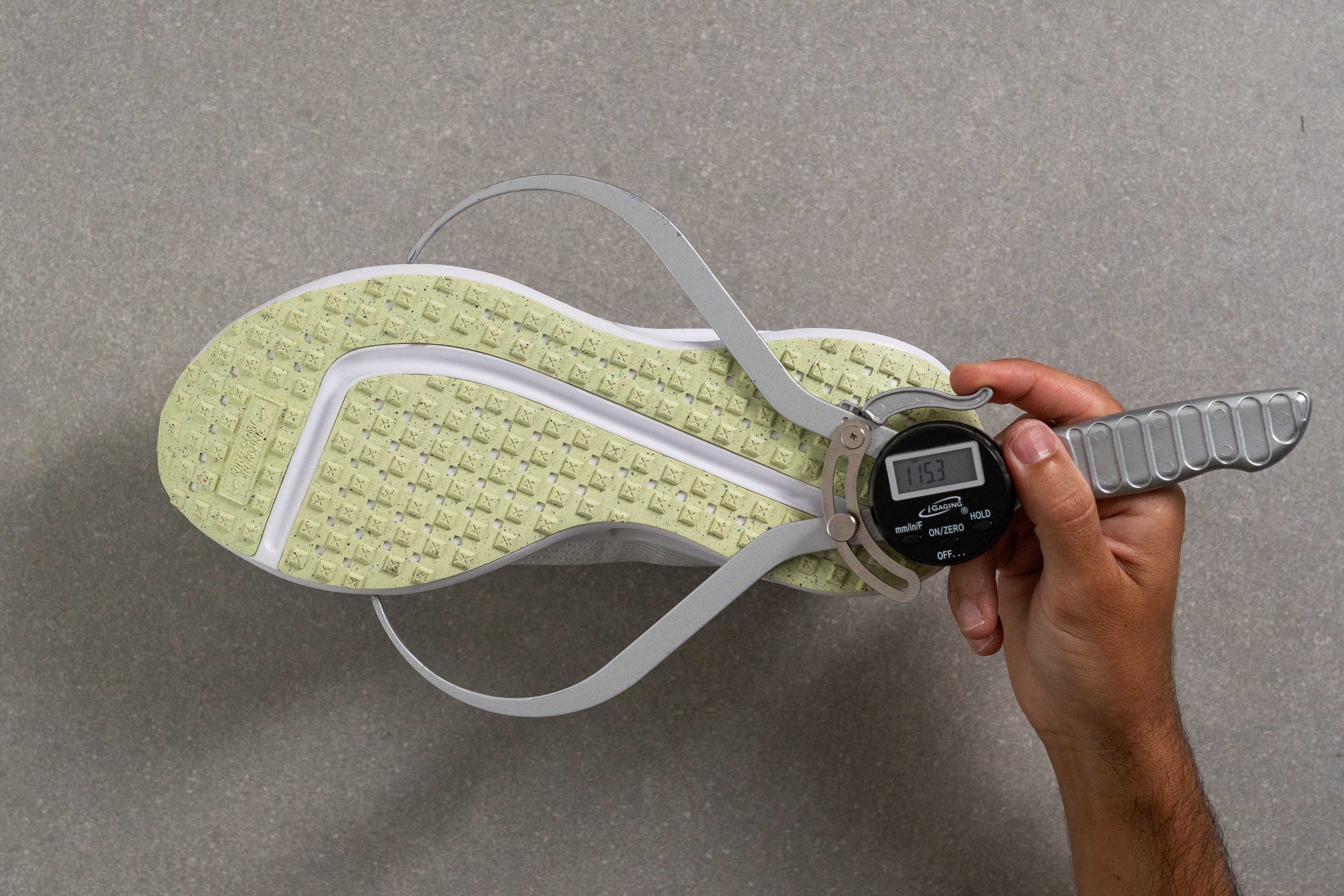
| Interact Run | 115.3 mm |
| Average | 114.4 mm |
Midsole width - heel
Our measurements of the heel area showed a width of 91.5 mm, which aligns well with the average. This width provides a stable landing platform, though as we said before, it's ideally suited for neutral runners.
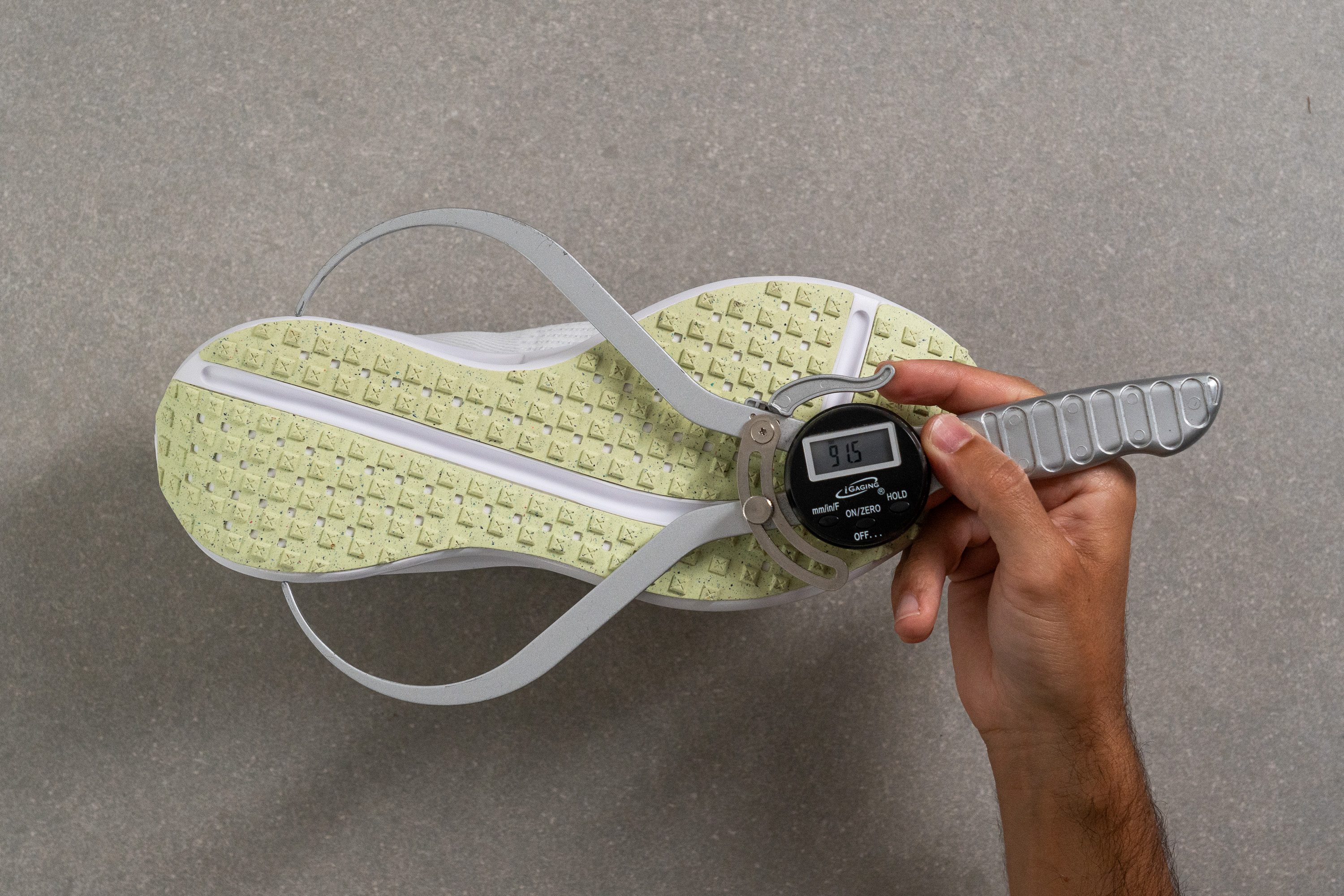
| Interact Run | 91.5 mm |
| Average | 90.7 mm |
Durability
Toebox durability
Following our initial positive test with the Interact Run, we were eager to determine the quality of this Flyknit upper. Was it top-tier or had Nike developed a lower-quality version for this shoe?
We put it to the test using our Dremel set to 3.2N of force and 5,000 RPM. Impressively, the Interact Run aced this tough challenge with a perfect 5-out-of-5 score.
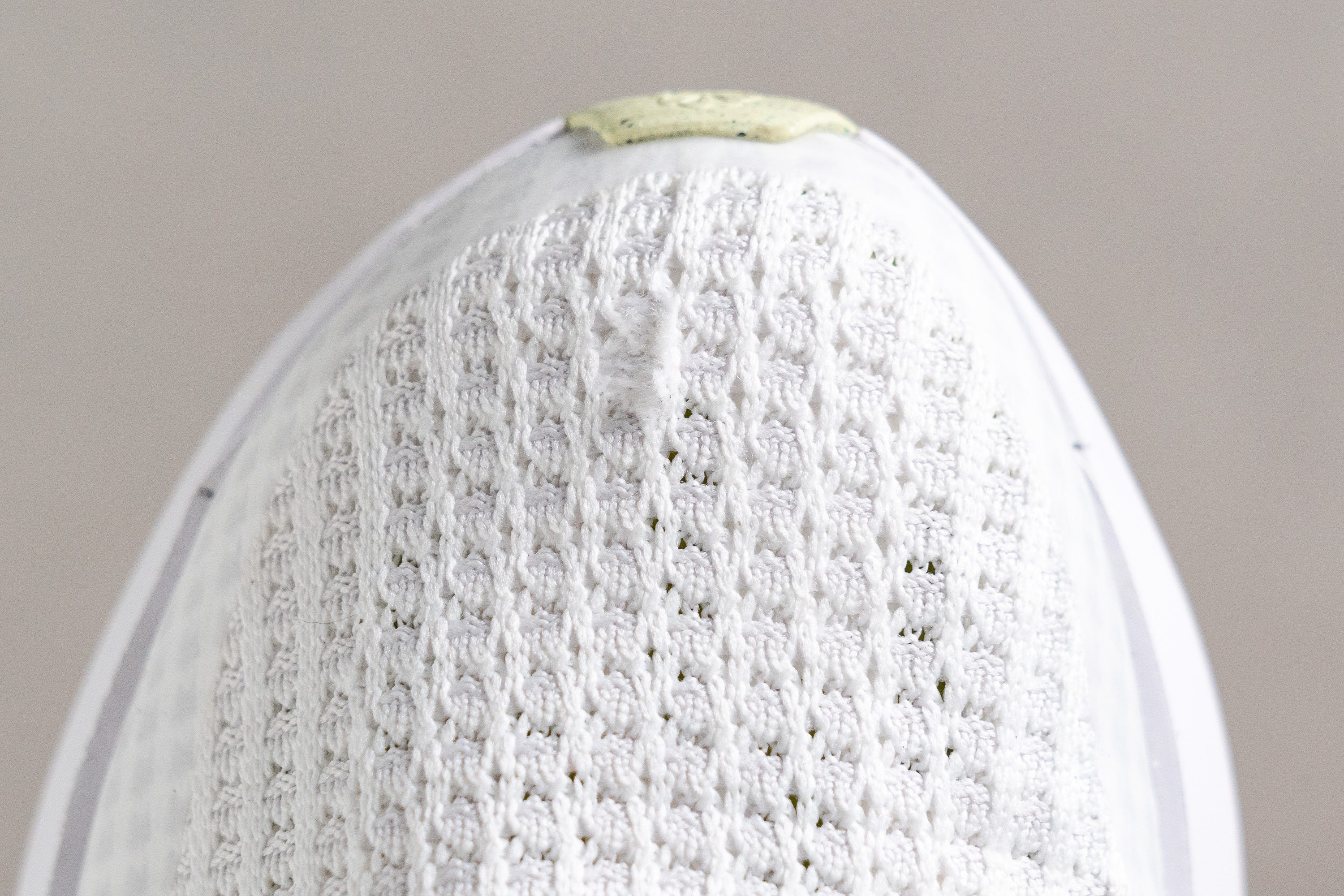
| Interact Run | 5 |
| Average | 2.6 |
Heel padding durability
To truly perfect the upper, it must also excel in terms of heel padding—a common weak spot in many shoes.
Using the Dremel under the same conditions, we achieved a score of 4 out of 5—this result is still significantly better than most running shoes, although it didn't quite reach perfection. Perhaps our expectations were a bit elevated after two back-to-back max scores!
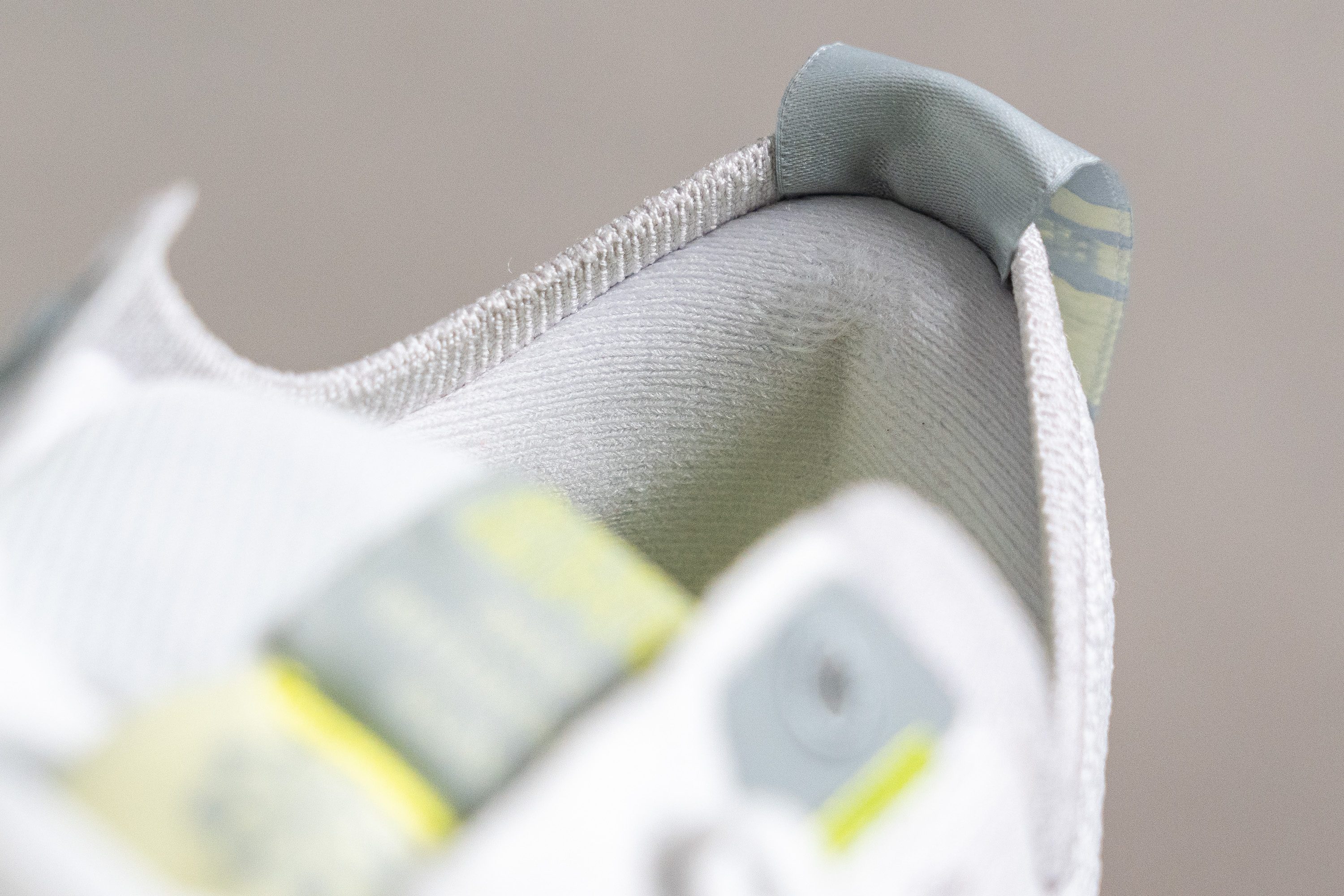
| Interact Run | 4 |
| Average | 3.4 |
Outsole hardness
After being impressed with the first three tests, we shifted our focus to the outsole—an essential component for durability in a budget-friendly daily trainer.

In our initial test, we pressed the Shore C durometer against the outsole and recorded an 89.8 HC score. This is notably high and suggests a design prioritising durability.
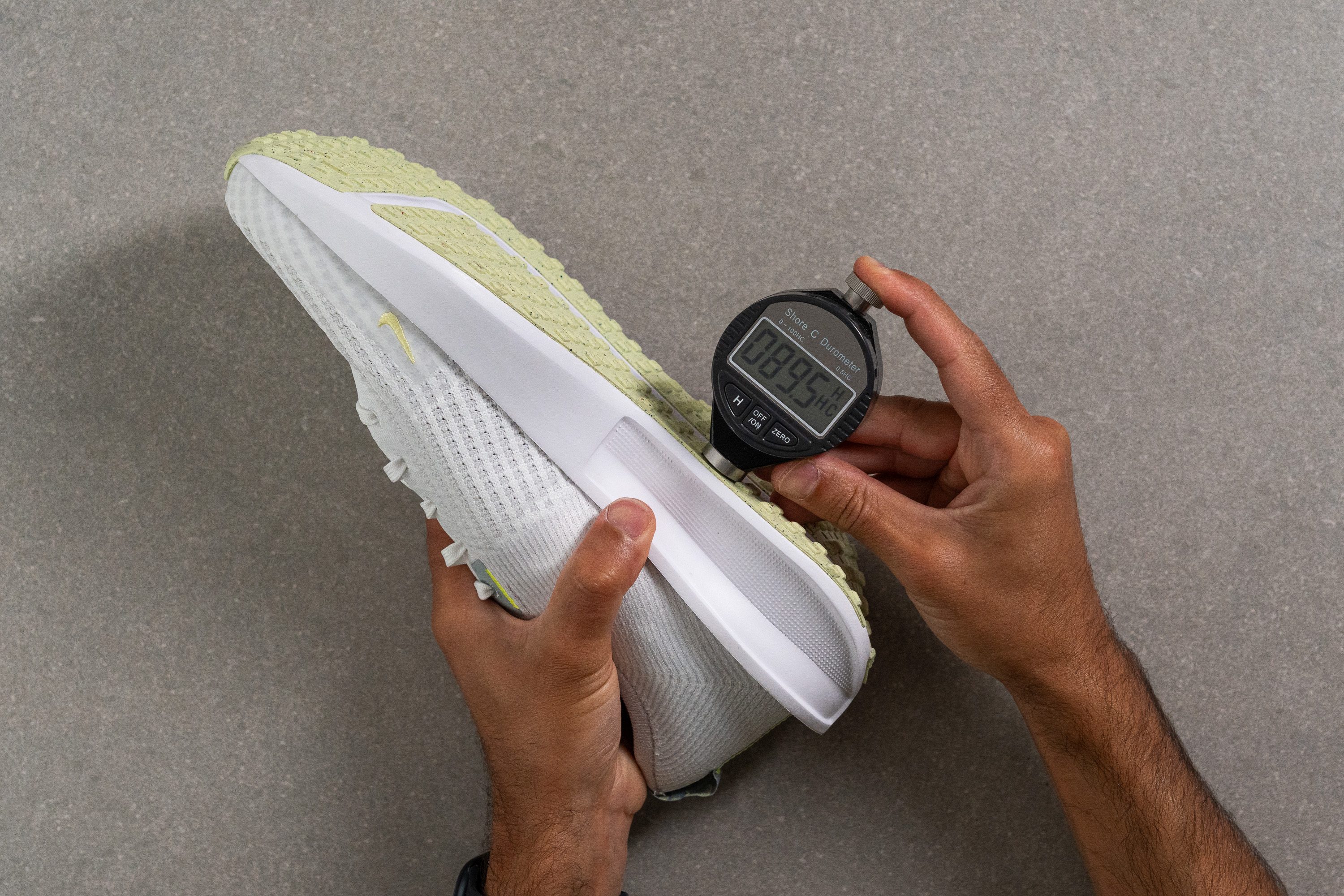
| Interact Run | 89.8 HC |
| Average | 79.2 HC |
Outsole durability
We doubled the speed of our Dremel for the third test, maintaining it for a lengthy 22 seconds, but the results were far from satisfactory, as the lug disappeared!
The outsole suffered 1.7 mm of damage, highlighting its lack of durability. Although the waffle, mini-lug design might account for some of the excessive wear—since less material contacts the sandpaper tip compared to a flat outsole—it's clear that the rubber used isn't particularly resilient.
In fact, other cheap Nike shoes with similar outsole designs like the Winflo 11 have shown much better durability in our lab tests.

| Interact Run | 1.7 mm |
| Average | 1.1 mm |
Outsole thickness
To conclude our examination of the outsole, we measured the thickness using our vernier calipers, which registered at 3.3 mm—a typical result that should suffice for most runners. However, those who tend to wear out outsoles quickly should not anticipate an extended lifespan from the Interact Run.
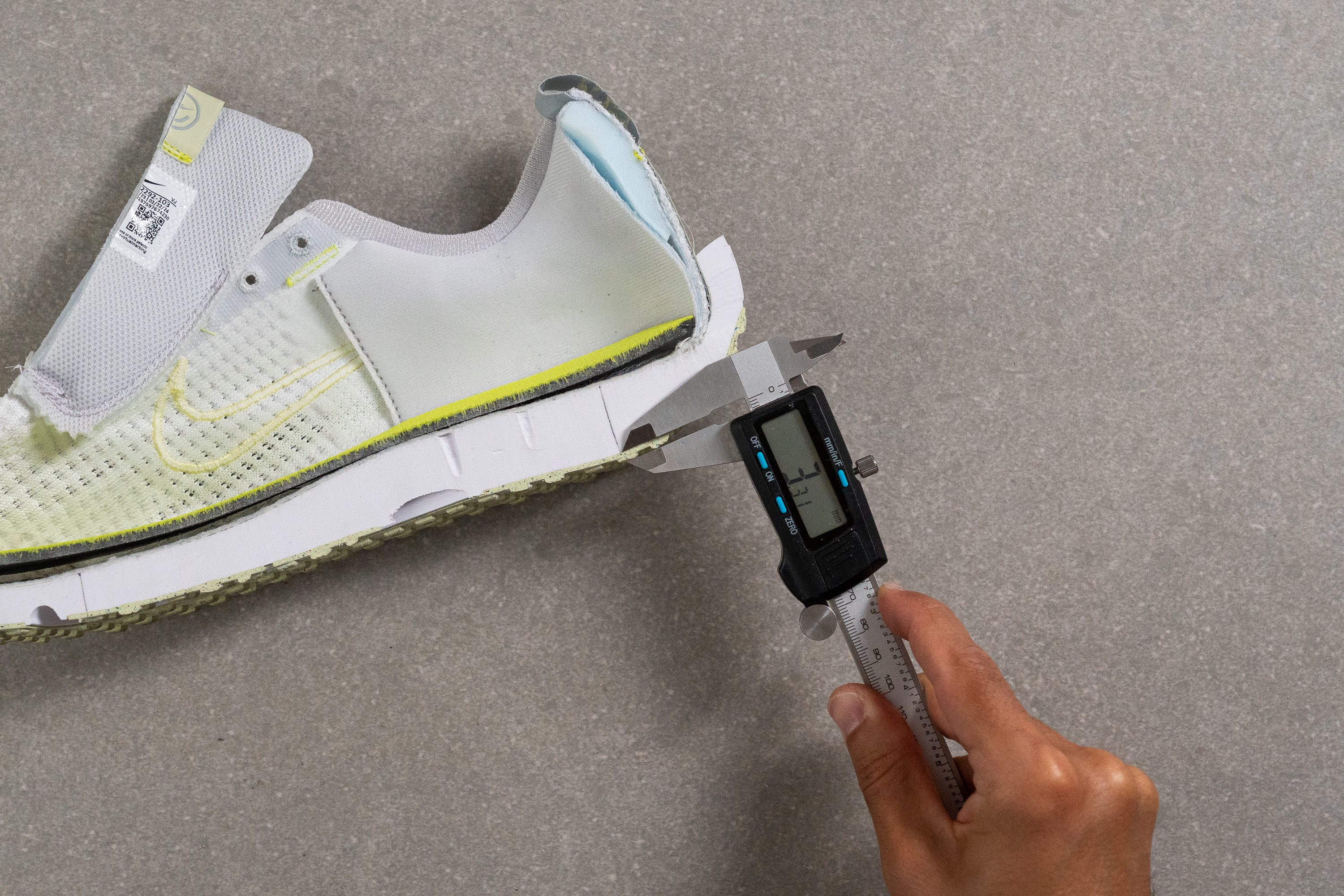
| Interact Run | 3.3 mm |
| Average | 3.2 mm |
Misc
Insole thickness
The insole was surprisingly thin at just 3.4 mm, which is notably slimmer than what we typically find in comparable shoes.
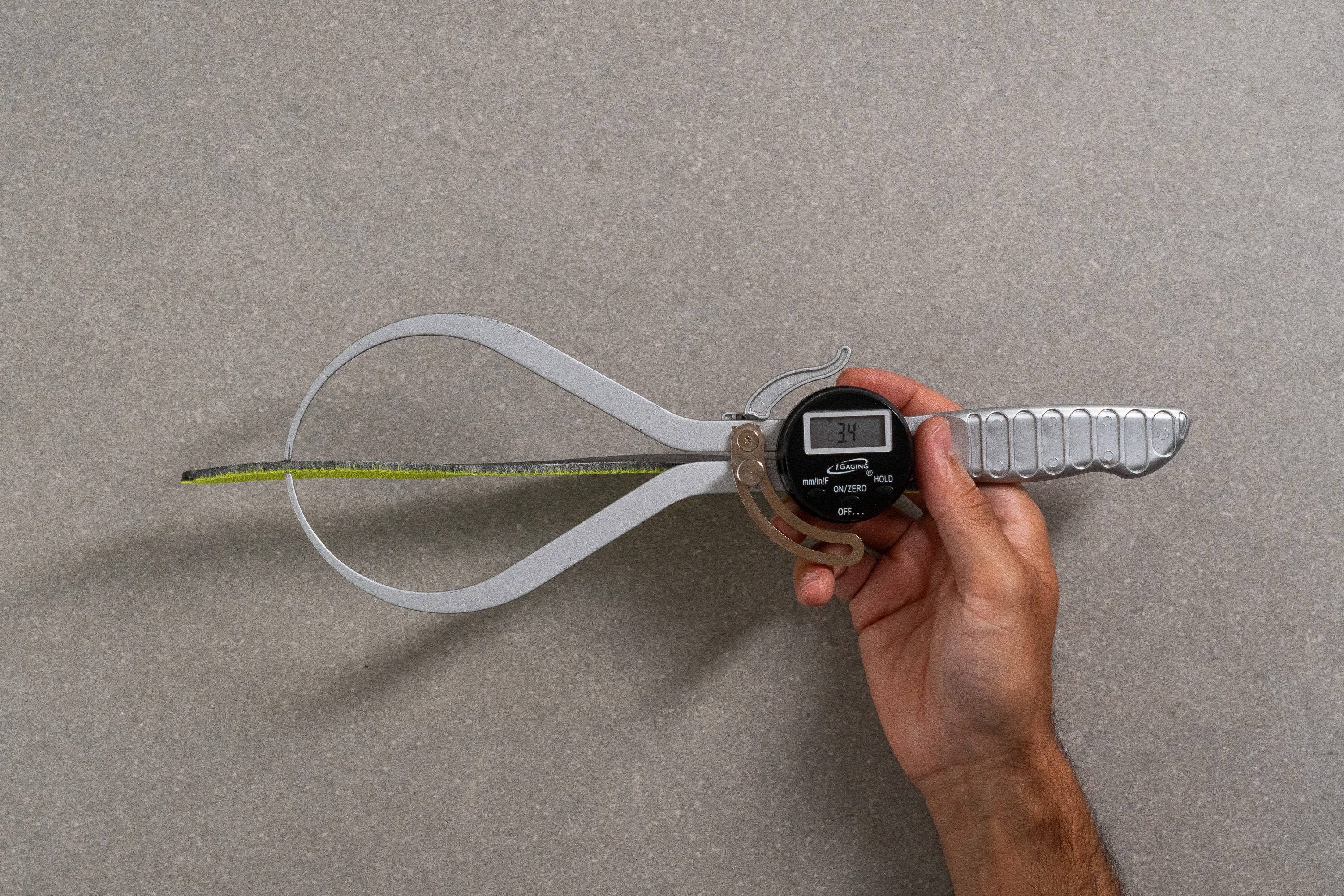
| Interact Run | 3.4 mm |
| Average | 4.5 mm |
Removable insole
Removing the insole of the Interact Run presents no issues, and we even think that swapping it for a higher-quality footbed can be a good move, as the original insole is quite basic and inexpensive. If you have, for instance, an Ortholite insole from another shoe, it might be worth trying it out!
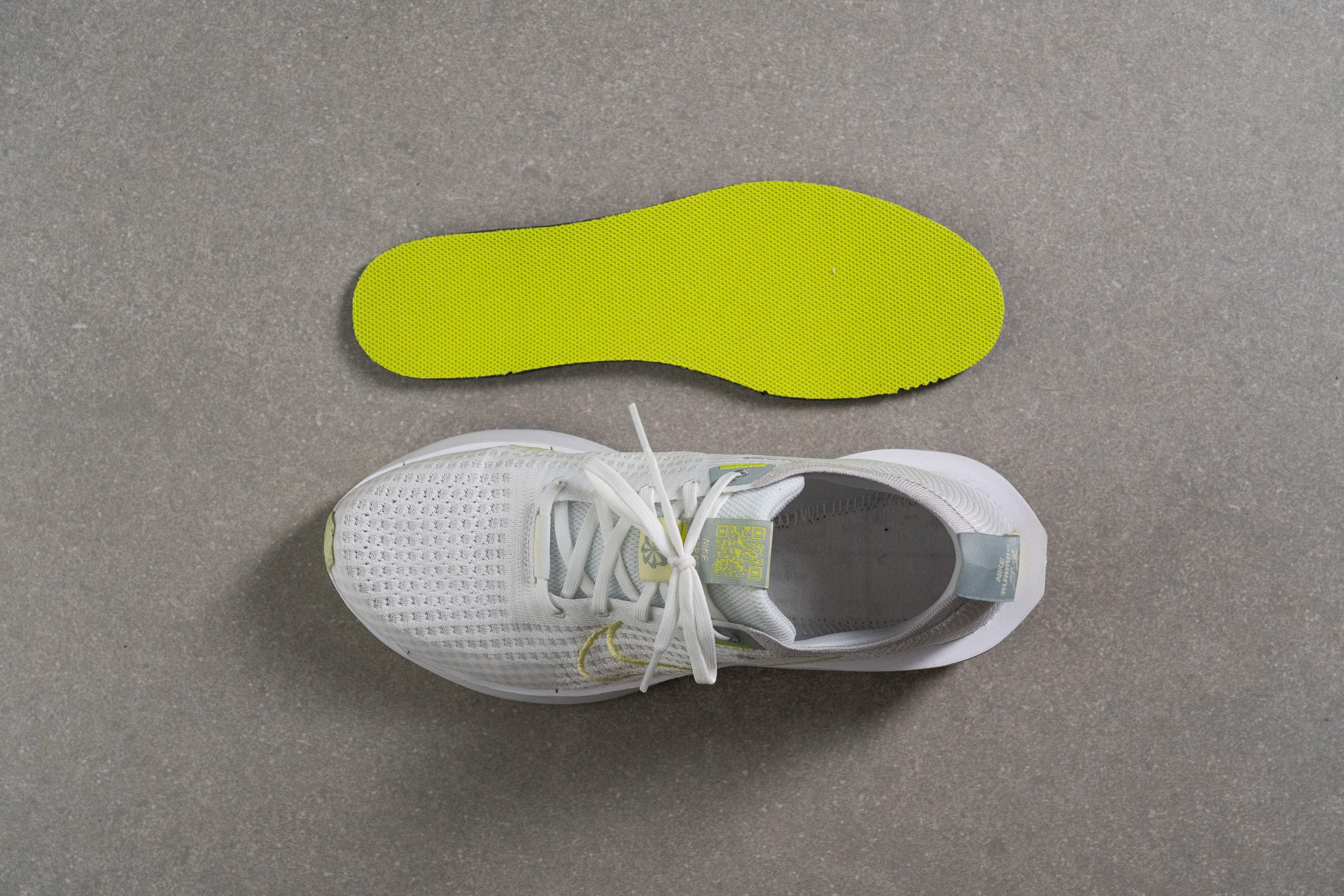
| Interact Run | Yes |
Midsole softness in cold (%)
We were quite pleased with the performance of the injection-molded midsole in this test, as it showed a 25.3% variation after 20 minutes in the freezer—a remarkable result for an EVA foam.
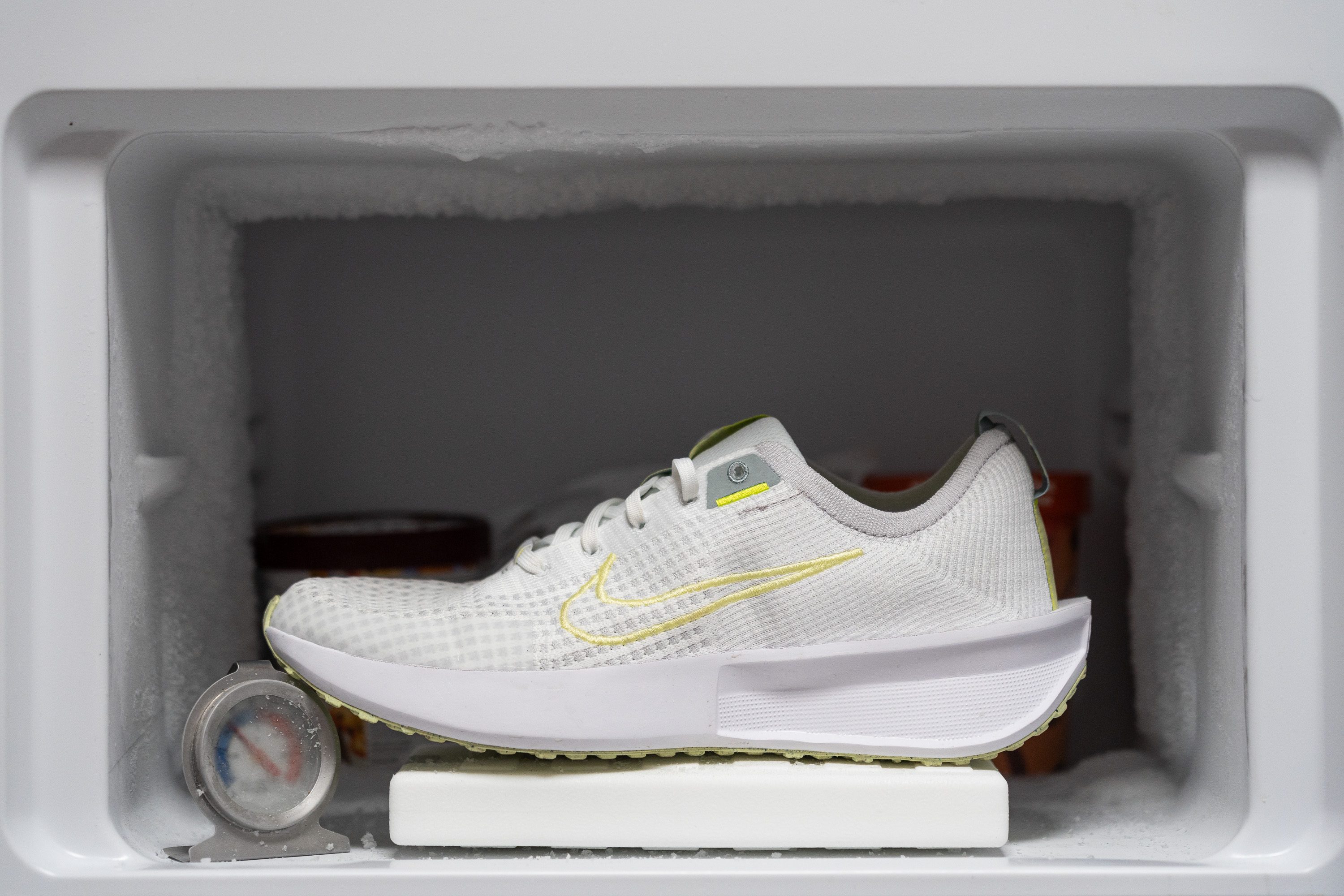
| Interact Run | 25% |
| Average | 24% |
Reflective elements
As we already told you, the Interact Run features a surprisingly high-quality Flyknit upper at an affordable price. However, we discovered that it misses reflective elements!

| Interact Run | No |
Tongue padding
We discovered that the tongue of the Interact Run boasts 9.0 mm of padding, crafted from two layers of foam. It's undoubtedly one of the plushest tongues we've tested in budget-friendly shoes, delivering exceptional comfort.

However, we found the lack of an extra eyelet on top to be a disappointing omission, even for an entry-level shoe.

| Interact Run | 9.0 mm |
| Average | 5.8 mm |
Tongue: gusset type
Considering the shoe's reasonable price, it didn't come as a brutal shock to us that Nike chose not to include a tongue that's fixed to the sides of the upper.
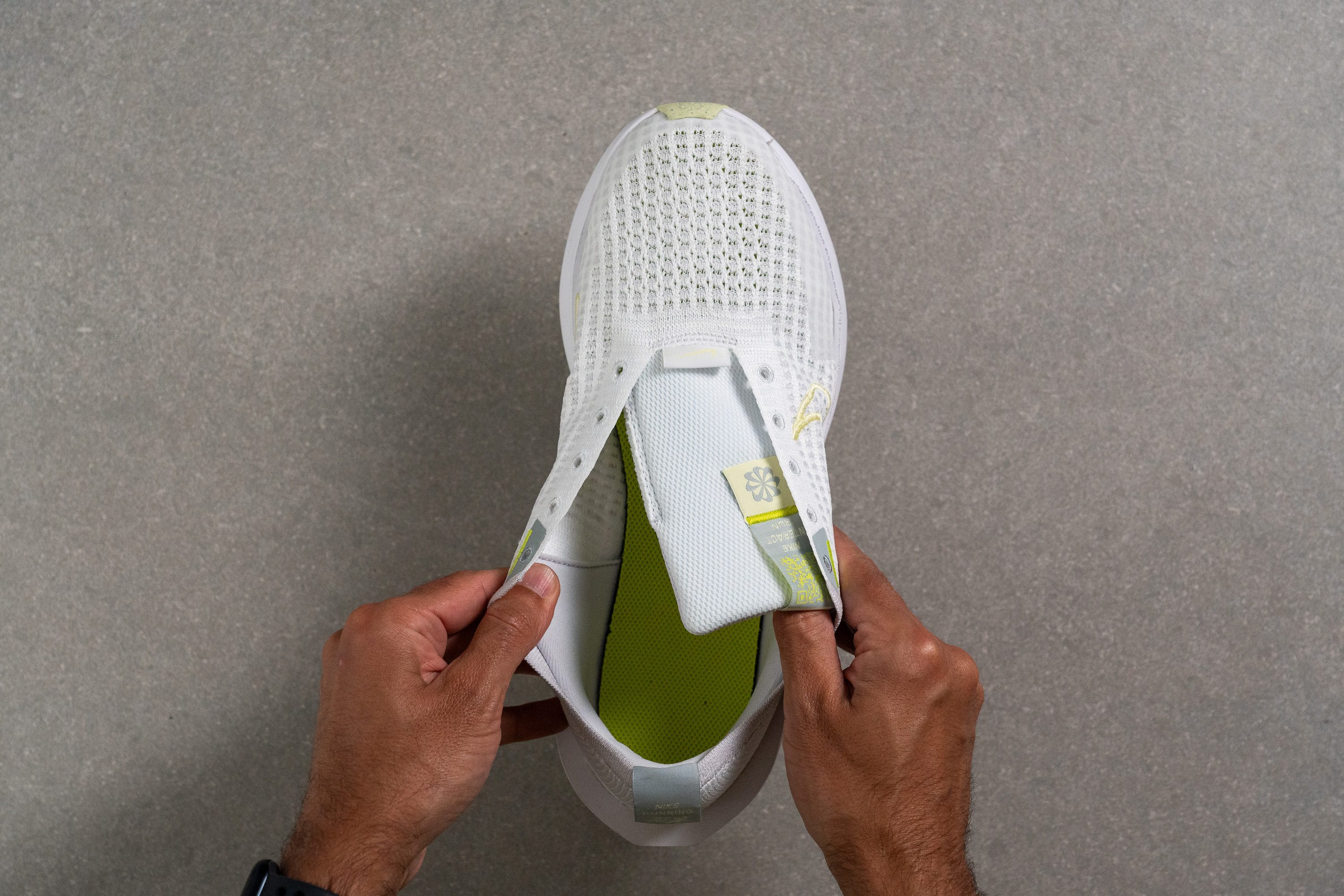
| Interact Run | None |
Heel tab
The Interact Run features a finger-loop heel tab—a detail typically found in pricier shoes. However, during our testing, we discovered that it's not the best design, as it's too wide, making it somewhat difficult to slip a finger inside. However, we must admit that it looks cool!
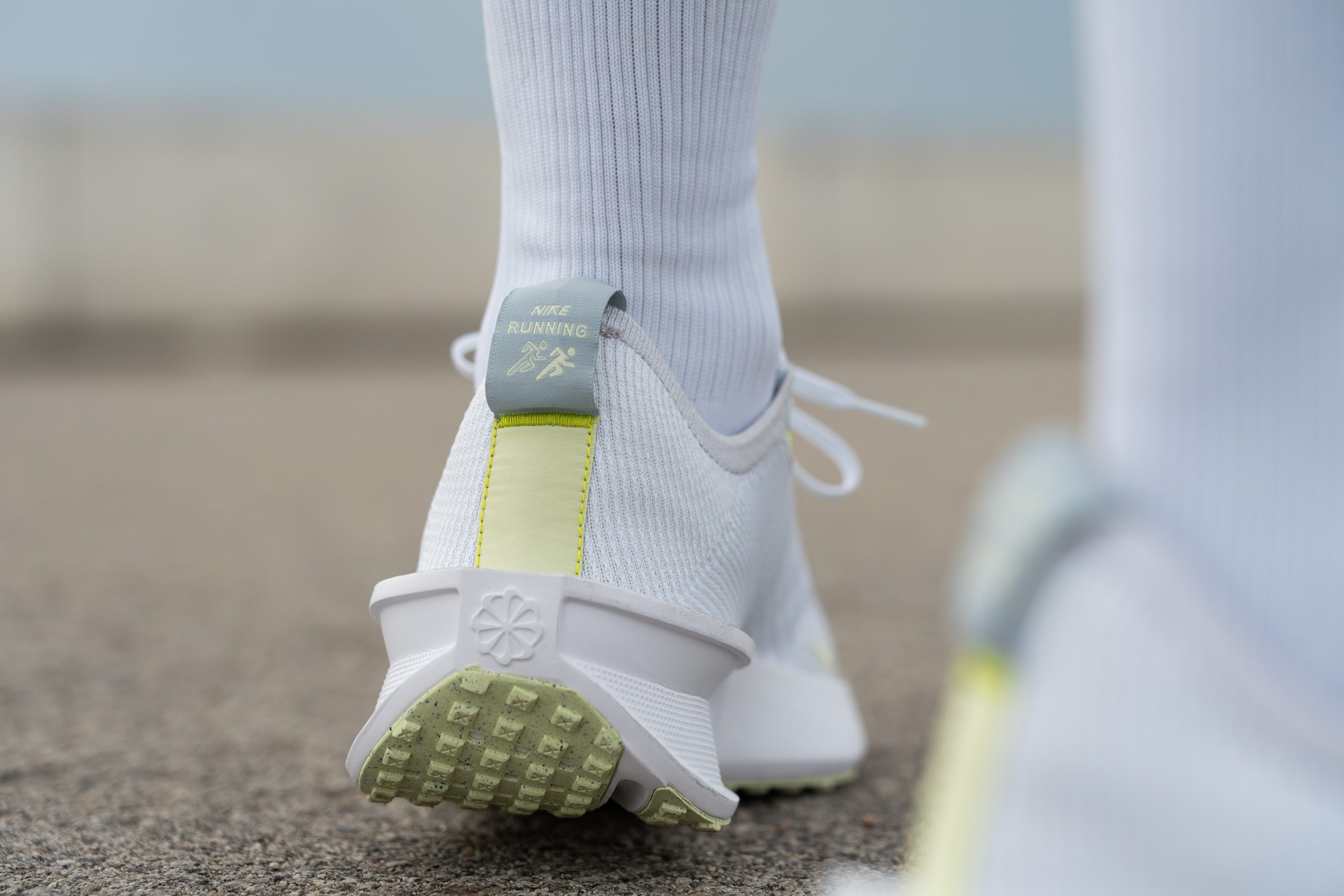
| Interact Run | Finger loop |

